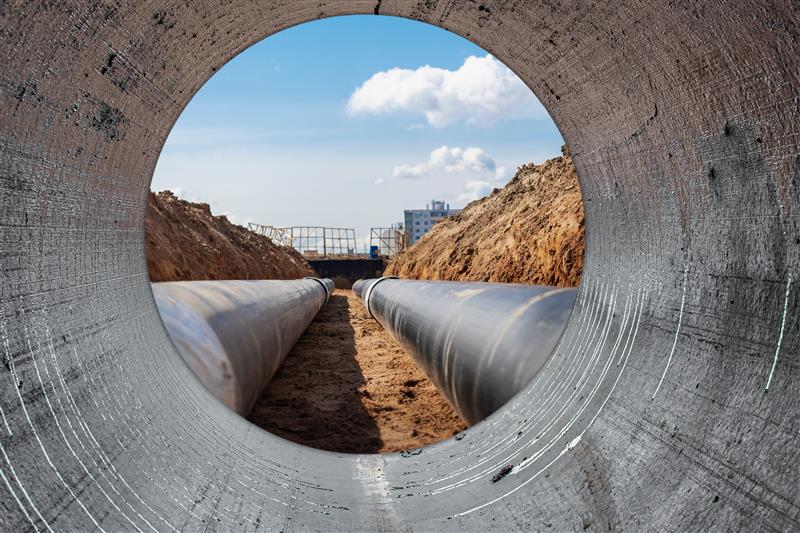
In today’s infrastructure, plastic piping system longevity is crucial for ensuring long-term efficiency in water supply, sanitation, and modern urban development.
In the fast-moving world of today, durable and long-lasting infrastructures are highly felt all around. Be it assuring a supply of clean water, sanitation, or building modern cities, our growing urge for strong and long-lasting infrastructural systems has never felt as high as today. Among these, piping systems indeed form one very important part in the formation of the spine of several essential services. Therefore, considering the durability and performance of these systems in all possible ways should be pursued to maximize their benefits for generations.
Factors Affecting the Lifespan of Plastic Piping Systems
The longevity of plastic pipes depends on three major dimensions: material quality, environmental exposure, and installation methods.
1. Material Quality
- Use high-grade HDPE, PVC, or PEX from certified manufacturers.
- Choose the appropriate polymer grade based on pressure, temperature, and chemical exposure.
- Ensure pipes are manufactured with modern extrusion methods for uniform wall thickness.
2. Environmental Conditions
- Temperature swings can lead to expansion and contraction, causing stress fractures.
- UV exposure leads to embrittlement in outdoor installations.
- Soil pH and chemical contaminants can degrade pipe material over time.
3. Installation Practices
- Ensure proper jointing and welding techniques.
- Backfill with soft materials to avoid stress on the pipe.
- Use bedding and cradling where needed to prevent sagging or shifting.
Maintenance for Plastic Piping System Longevity
1. Routine Inspections
Schedule visual checks for leaks, bulging, or discoloration.
Use pressure monitoring tools and flow sensors for early detection of anomalies.
2. Preventive Maintenance
- Regular flushing prevents scale buildup and organic blockages.
- In irrigation systems, periodic flushing prevents algae growth.
- Use chemical inhibitors where appropriate.
3. Timely Repairs and Replacements
- Use matching materials for repairs to maintain consistency.
- Always follow manufacturer repair guidelines or standards like ASTM or ISO.
Common Issues and How to Prevent Them
1. Corrosion and Scaling
- Use chemical-resistant grades of pipe.
- Periodic cleaning reduces scaling and pressure issues.
2. UV Degradation
- Use UV-stabilized materials.
- Apply protective coatings or bury above-ground installations.
3. Tree Root Intrusion
- Avoid planting trees near pipelines.
- Use physical barriers to deflect roots.
- Schedule annual inspections in high-risk areas.
Tips to Ensure Plastic Piping System Longevity
✔ Proper Design and Engineering
Plan for flow rate, pressure, and future expansions.
Consider chemical and temperature exposure in design phase.
✔ Quality Control
Source pipes and fittings from accredited suppliers.
Engage certified installers with experience in plastic piping.
✔ Regular Monitoring
Use IoT-enabled sensors for continuous pressure/temperature monitoring.
Schedule routine checks and log all maintenance actions.
Future Considerations for Plastic Pipe Longevity
-
Understand lifespan by material: Know expected lifecycles for HDPE, PEX, PVC under real-world conditions.
-
Optimize PVC performance: Use correct fittings, jointing methods, and protective coatings.
-
Leverage innovation: Apply nanotechnology, 3D printing, and composite blends to improve performance.
-
Study degradation causes: Soil acidity, UV radiation, and installation errors should be considered in both design and maintenance.
Conclusion: Invest in Longevity and Innovation
Ensuring the long-term success of plastic piping systems involves quality materials, smart design, correct installation, and proactive maintenance. By implementing industry best practices and leveraging emerging technology, you can significantly reduce costs and extend the service life of your infrastructure.
Let plastic pipes serve your infrastructure reliably for generations—with thoughtful planning and continuous improvement.
Learn more about the benefits of using HDPE pipes in construction.


